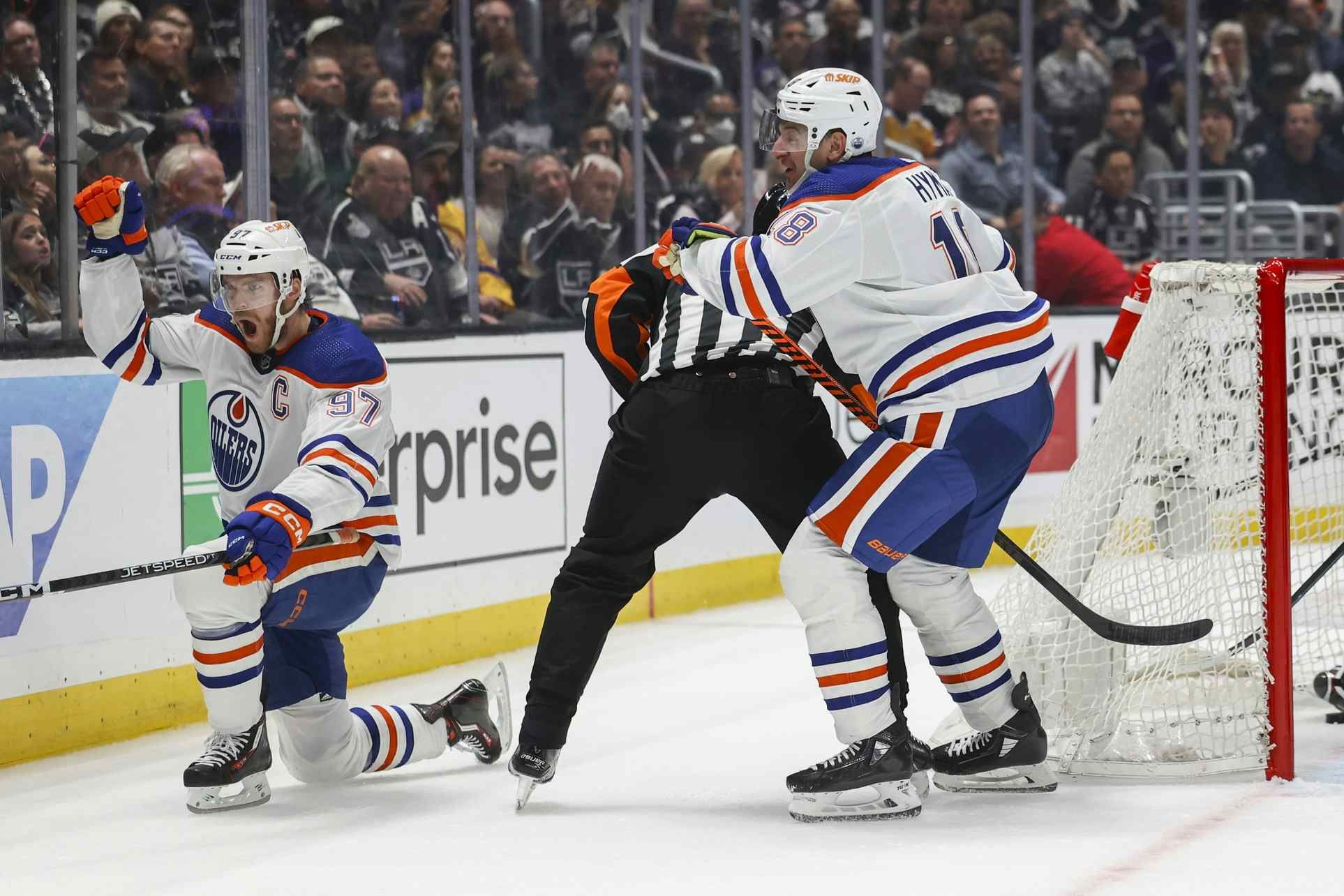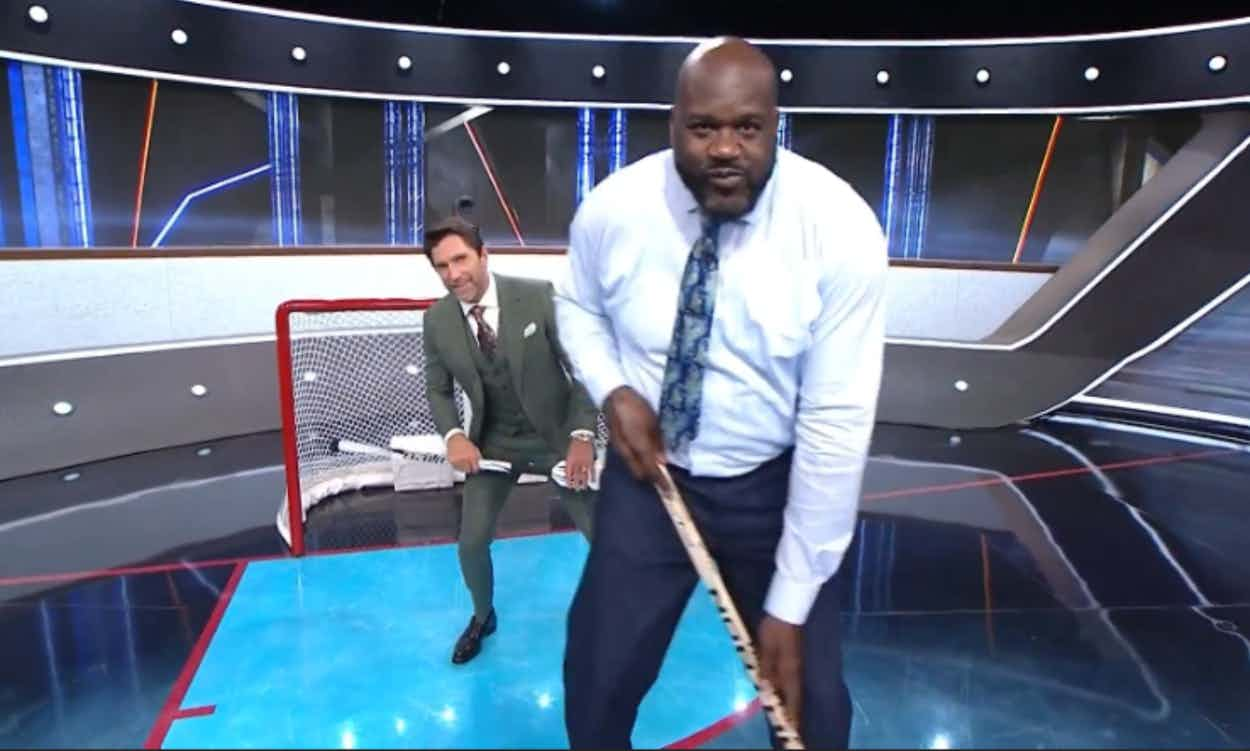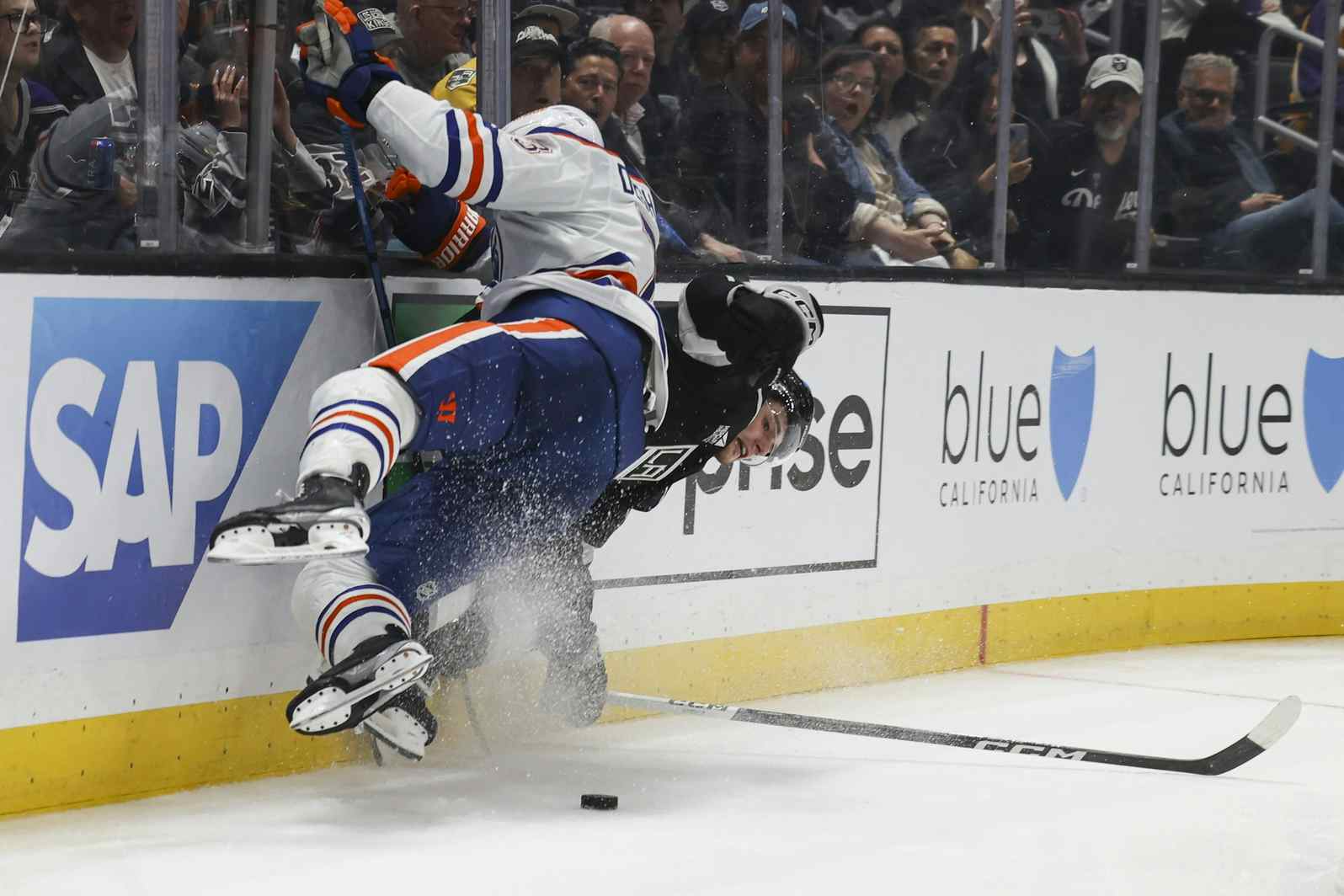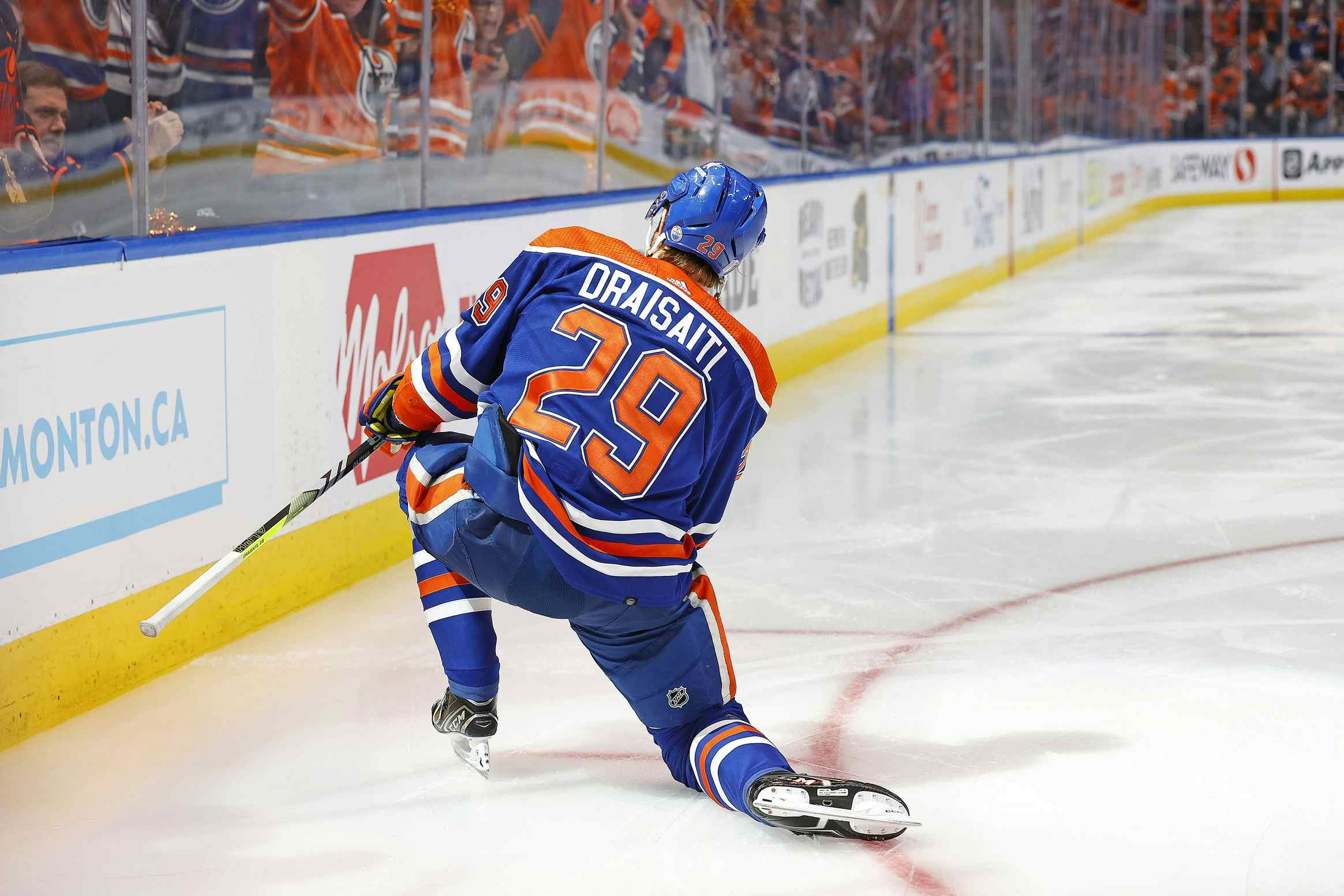Oklahoma City Barons Watch: November 17

After an early period of roster fluctuation, it appears that the Oklahoma City Barons are finally moving towards calmer waters. The forward corps has been improved and somewhat stabilized, the defence has been thinned out a little with the recall of players like Corey Potter and Philip Larsen, and coach Todd Nelson has his team playing pretty good hockey.
Which players are standing out?
Before I begin, a brief explanation of the charts below. I’ve been recording Fenwick numbers for each player – shots and missed shots when they are on the ice at even-strength (with the twist that I don’t record shots from outside the offensive zone). I’ve also recorded zone starts, showing whether a player started more frequently in the offensive or defensive end of the rink. The final column is “Adjusted Fenwick” – which is a fancy way of saying the ratio of shots/missed shots the team manages with each player on the ice with an adjustment factor for which zone they’re starting in.
All numbers from home games only.
Forwards

Andrew Miller. Miller’s scoring numbers are vanilla, but his line (lately he’s been playing with C.J. Stretch and Austin Fyten) is driving results at even-strength. Miller himself is an exceptional skater and has offensive tools that exceed those of his linemates. On Saturday, this trio was Oklahoma’s top line – after the game, Todd Nelson made a point of jumping in without being asked to talk about how the unit had been facing Abbotsford’s top line and not only shut them down but scored two goals in the process.
Tyler Pitlick. Nothing new to report, as he was recalled and then injured. Speaking to somebody in the know down here, I was told that Pitlick’s development path was ‘play better, get hurt, come back and play poorly, play better and then get hurt.’ Over and over and over again.
Anton Lander. He’s a legitimate first-line centre in the AHL. He plays an exceptionally good defensive game (he’s been Nelson’s most preferred penalty killer), and has enough skill to stick in a top scoring role at the AHL level. Without question he’s a complementary offensive player and is likely destined for an NHL bottom-six role, but he’s a much better player now than he was at this point last year. It honestly makes me wonder how his career might have gone differently if the Oilers hadn’t kept him in the NHL as a rookie professional.
Linus Omark. He delivers results. The way he delivers them – at times making jaw-dropping offensive plays, at other times making frustratingly complicated moves when a simpler play would be better – gets him in trouble, but the constant is that the results are there. I don’t think he’s at 100 percent yet, either; he’s never been fleet of foot but to my eye his skating isn’t yet to where it’s been in the past.
Matt Ford and Derek Nesbitt. These guys aren’t really Oilers prospects, but I highlight them because they are the sort of minor-league veterans every team needs. They can slot in wherever, climbing the lineup when players are recalled and then sliding down when prospects excel or people return from the majors. Ford in particular has impressed; he isn’t overly big but he combines grit with a good two-way game.
Ben Eager. The fourth line is better with him on it.
Kale Kessy and Travis Ewanyk. This duo has mostly formed the core of the fourth line. The kill penalties together, add a physical element and provide defensive conscience. Both have played up the lineup at times and while both project as NHL fourth-liners (if they make it at all) they do some nice things.
Ryan Hamilton and Roman Horak. These two have mostly played together, and there are some exceptional circumstances at work. Hamilton is a good AHL player coming off injury, while Horak was just moved back to centre after playing wing in the Flames’ organization. By eye, they aren’t as bad as the numbers and they’re getting better every game; I’d be surprised if they’re still at the bottom of the chart once the sample gets larger.
Defence

Taylor Fedun. He’s a legitimate number one AHL defenceman. He doesn’t do any one thing brilliantly but he does everything well and the results are undeniable. He’s just waiting for an extended opportunity now.
Corey Potter. The results are even more impressive once one realizes he was still recuperating from injury during his time in Oklahoma. He’s an NHL player.
David Musil. There’s been a lot of doom and gloom around Musil’s status as a prospect, but his game has translated beautifully to the professional ranks. He generally alternates with (and occasionally plays beside) Martin Gernat on Oklahoma’s third pairing and seems comfortable playing on his off-side.
Brad Hunt. Hunt’s been a utility defender for Todd Nelson, and has often been caught in the numbers game because of the need to play rehabbing NHL’ers and top prospects. He can play on either side of the ice and has spent significant time on the right side, he’s got a wicked shot and plays physically despite being undersized.
Oscar Klefbom. His first four games were excellent and his last two games were quite bad, which made his recall a bit of a surprise. There is all sorts of raw talent – picture Ladislav Smid, but with more ability with the puck – but this is a guy the organization has to be patient with. He’s playing important minutes in Oklahoma City and it’s best for young defencemen to work the rough edges off in the AHL where both the pressure and the repercussions of failure are less heavy.
Brandon Davidson. Davidson got bumped to the third pair this weekend and it seemed to make a big difference; after weeks of struggles he impressed against a very good Abbotsford team.
Martin Marincin. The raw tools are obvious – he’s big, rangy, confident with the puck and every so often plays the body – but there are miles of road ahead. He’s a bit of an adventure defensively and still seems to have a brain-cramp quota to fill every night. There’s lots of time left – he’s only 21 years old – and he needs it.
Denis Grebeshkov. I was a little surprised to see Grebeshkov at the bottom of the chart, but when I looked at the game-by-game summaries I saw why. Grebeshkov’s last four games yield an adjusted Fenwick rating of 59.3 percent even as he’s played top opposition, but his first two games the results were really not on his side. He needed time in Oklahoma City to stabilize his game, but the results of late have been encouraging and if he keeps playing as he has the last little bit he will work his way back to the majors.
Goalies

Oklahoma has played four different goalies, and there have been some surprises.
Tyler Bunz did remarkable work in a pair of starts with the Barons (1-0-1, 0.937 save percentage). He told me that he lost 25 pounds over the summer after taking a good look at where he really wanted to go in life, and feels good about his game after a poor 2012-13 campaign and an up-and-down training camp. It’s too early to come to any conclusions, but it’s nice to see him showing some signs of improvement.
Ilya Bryzgalov looked rusty in his first game after a long layoff (as he put it “clumsy, as expected”) but was much better in his second game, earning accolades from teammates and looking both calm and in control. As Todd Nelson said, “he made it look easy.”
Richard Bachman hasn’t played in some time thanks to an NHL recall and then an injury, but he delivered as a legitimate above-average AHL starter.
Laurent Brossoit hasn’t played for the Barons yet; he looked good in October in mop-up duty in a game against Oklahoma.
Recent articles from Jonathan Willis





